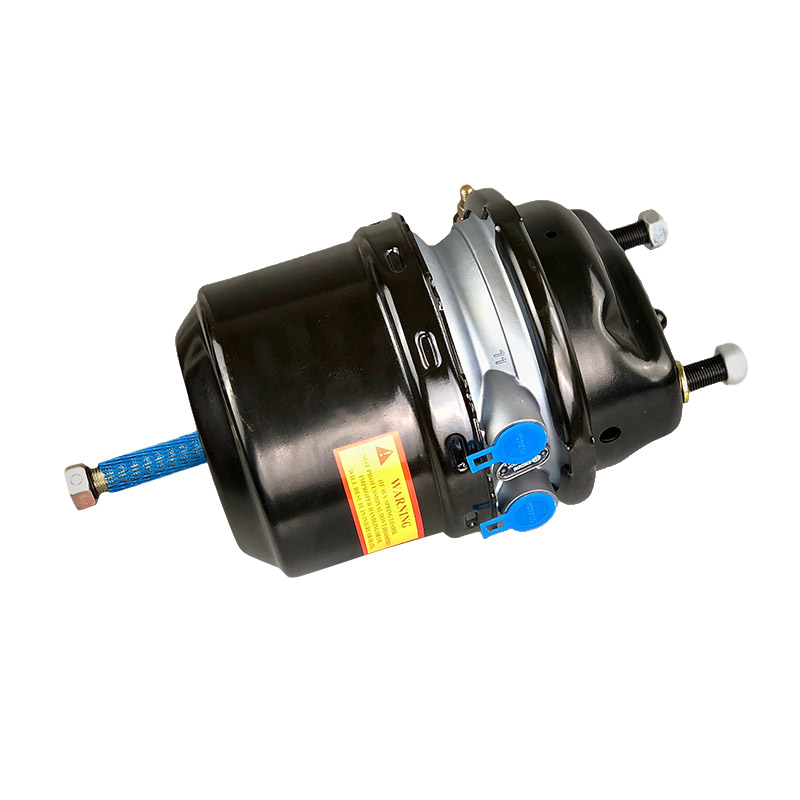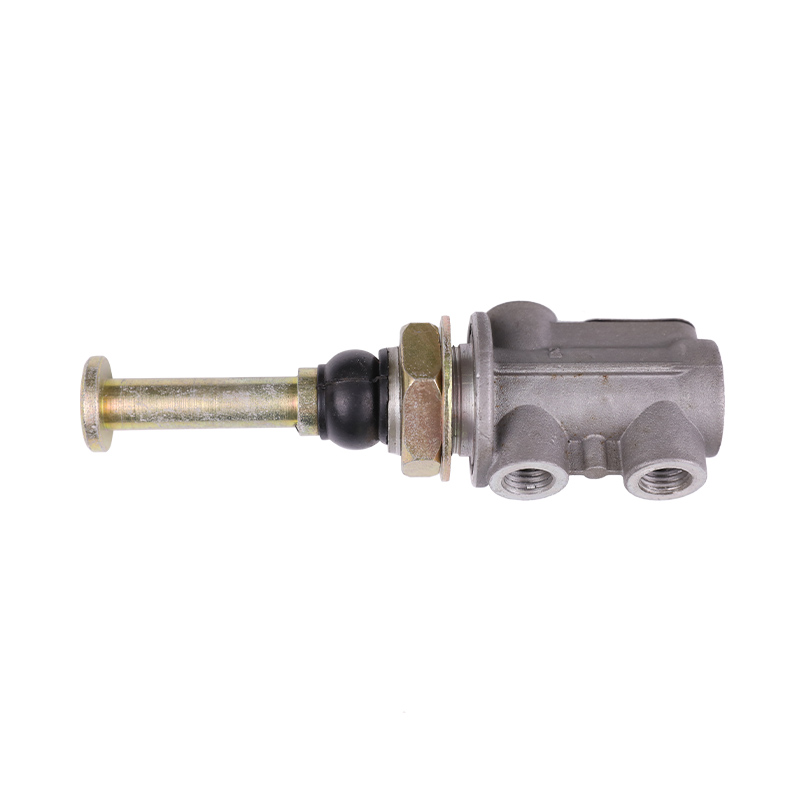The Parking Release Valve (PRV) is a critical component in air brake systems, ensuring the safety of vehicle parking and efficient release of the brakes. Due to its frequent operation and reliance on compressed air quality, the PRV exhibits several characteristic failure modes. Accurate identification and understanding of these modes are fundamental to guaranteeing vehicle safety and reducing maintenance costs.
1. Internal Leakage Faults: The Core Issue of Lost Air Tightness
Internal leakage is the most common and pervasive type of failure in PRVs, directly threatening the system's ability to maintain pressure.
Leak Path One: Piston Seal Failure
-
Symptoms: When the parking brake is released (PRV in the working position), there is an unauthorized passage of air between the control pressure and the exhaust port. Conversely, when the brake is engaged, system supply pressure leaks into the control chamber.
-
Technical Cause: The Piston Seal material ages, wears, or hardens due to contamination from oil in the compressed air. Scratches on the piston surface or foreign object lodging compromise the integrity of the sealing interface.
-
Diagnostic Key Points: The brake system's pressure drop rate is excessively fast. A continuous or intermittent hiss of air can be heard through the exhaust port when the parking brake is in the released state.
Leak Path Two: Valve Seat Seal Failure
-
Symptoms: The pressure in the spring brake chamber cannot be effectively maintained, or there is weak inflation of the parking cylinder when the brake is supposed to be engaged (locked), leading to insufficient braking force.
-
Technical Cause: The Valve Seat Seal on the poppet/spool is worn, cracked, or the valve element is not making proper contact with the seat due to insufficient spring force. The valve seat surface may also be corroded by contaminants or scale.
-
Diagnostic Key Points: After the parking brake is engaged, the pressure in the air line connected to the parking cylinder rises slowly, or pressure decay tests show the parking cylinder's pressure retention capacity fails to meet specifications.
2. Delayed or Stuck Operation: Risks of Reduced Responsiveness
Delayed or completely stuck operation is a direct manifestation of PRV performance degradation or function loss, severely impacting driver response and braking system safety.
Failure Mode One: Slow Release
-
Symptoms: After the driver operates the release handle, the parking brake disengagement speed is noticeably slower than normal, potentially causing difficulty in vehicle start-up or incomplete brake release.
-
Technical Cause: Increased friction between the piston or valve element's moving surface and the inner wall of the valve body, typically caused by lubricant failure, oil buildup, or minor component corrosion. Insufficient control air pressure supply, failing to quickly overcome the initial preload of the return spring.
-
Diagnostic Key Points: Measure the time required from control signal input until the parking cylinder pressure reaches the release threshold, comparing it against the manufacturer's specified Response Time.
Failure Mode Two: Complete Sticking
-
Symptoms: The parking release valve fails to switch state, manifesting as continuous locking (cannot be released) or continuous releasing (cannot be engaged/locked).
-
Technical Cause: Foreign objects (such as scale, metal fragments) jamming the clearance between the piston/valve element and the valve body. Component deformation due to external impact, causing the tolerance fit to exceed the allowed range. Internal spring breakage or severe deformation.
-
Diagnostic Key Points: Verify that control air pressure is properly supplied. If pressure is normal but the valve body shows no mechanical movement, disassembly is required to check for mechanical seizure or sticking.
3. Flow Restriction and Poor Exhaust: Signs of Low Efficiency
The PRV's exhaust function is crucial for rapid parking brake release. Restricted exhaust significantly prolongs the brake release time.
Failure Mode: Exhaust Port Blockage
-
Symptoms: When the parking brake is released, the exhaust sound is weak, the release time is prolonged, or the air pressure is not fully discharged.
-
Technical Cause: The Muffler or Exhaust Filter located at the exhaust port is completely clogged by oil residue, dirt, or ice crystals.
-
Diagnostic Key Points: Inspect the appearance of the exhaust port; clear signs of oiliness or carbon buildup may indicate blockage. Perform an exhaust test after removing the muffler; if the release speed returns to normal, the muffler is identified as the issue.
Failure Mode: Constricted Airflow
-
Symptoms: The rate of air pressure change is slow during both release and engagement.
-
Technical Cause: Restricted movement of the valve element or internal fouling of the air passages, leading to a reduction in the actual Effective Area of flow.
-
Diagnostic Key Points: This issue often occurs concurrently with internal leakage. Specialized flow testing equipment or comparison of pressure drop across the valve is needed to assess airflow efficiency.
4. Mechanical Fatigue and Damage: Loss of Structural Integrity
Long-term use and harsh environments can lead to reduced mechanical performance or physical damage to the internal structural components of the PRV.
Failure Mode One: Return Spring Fatigue or Fracture
-
Symptoms: The pressure in the cylinder cannot be fully exhausted during parking engagement, or the locking force is insufficient.
-
Technical Cause: The spring steel experiences material fatigue due to high-frequency compression and tension stress over time. Spring fracture prevents the valve element from resetting automatically.
-
Diagnostic Key Points: Assess spring fatigue by comparing the spring's Free Length and Stiffness against manufacturer standards.
Failure Mode Two: Valve Body Rupture or Port Cracking
-
Symptoms: Visible external or severe internal leakage.
-
Technical Cause: The PRV sustains external mechanical impact, or in extreme cold weather, the freezing and expansion of internal residual water causes the valve body (often cast aluminum) to fracture.
-
Diagnostic Key Points: Easily identified by visual inspection for cracks on the valve body surface or physical damage at the ports. This type of failure typically necessitates the replacement of the entire PRV assembly.
Systematic analysis and diagnosis of the above PRV failure modes are vital steps in ensuring the reliability of commercial vehicle braking systems. Professional maintenance teams must possess the capability to identify these complex pneumatic and mechanical issues.






